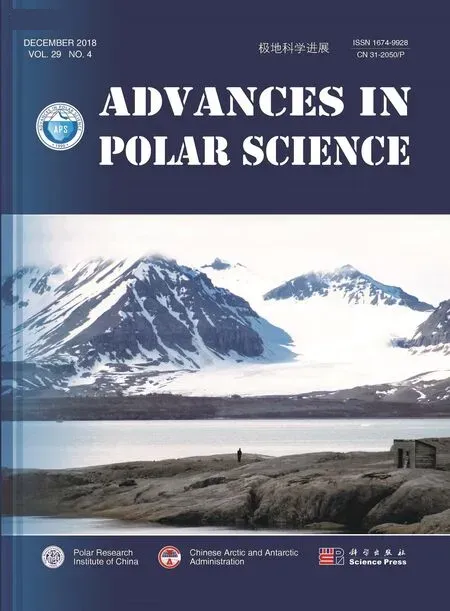Towards truly integrated modeling and observing of marine ice sheets
2018-12-31DavidGWYTHER
David GWYTHER
Institute for Marine and Antarctic Studies, University of Tasmania, Private Bag 129, Hobart, TAS 7001, Australia
Keywords cryospheric modeling, observations, future planning
Understanding the current and future stability of Antarctica’s ice shelves is critical for assessing the potential for rapid sea level rise emanating from Antarctica’s marine ice sheets. The acceleration in ocean-driven mass loss from the West Antarctic Ice Sheet (Shepherd et al., 2018) is one such focus for intense research interest. The scale and urgency in understanding ocean-driven Antarctic mass loss motivates better integration and cooperation between modelers and observational scientists.*
Observing and monitoring with oceanography transects, moorings, ice shelf boreholes or ice surface-deployed radar sounders provides us with valuable information on the current state of vulnerable ice shelves such as the Pine Island and Thwaites Glaciers. However,this insight is often limited in time and is sparsely sampled in space. Logistical constraints compounded by treacherous conditions from sea ice or crevasses further inhibit long-term and broad-scale studies.
On the other hand, numerical simulations of the ocean and ice sheets, while being relatively cheap to run, are limited by lack of observations. Models need observations to set boundary conditions (e.g. seabed bathymetry or surface wind forcing), in the development of parameterizations (e.g. for sub-grid scale processes like turbulence) and for validation and verification of results.
There has always been a traditional divide between observationalists and theoreticians (and by extension,modelers) in the physical sciences. However, in the cryospheric sciences, where we are being timed by the climate countdown clock there is strong motivation for us to bridge this divide. Cooperation should be achieved in a coordinated and integrated sense; from the mission planning stage, through to the analysis and presentation of results.
An observing mission can use model results at the planning stage to guide the sampling strategies. For example, by identifying sampling regions where the seasonal signal has the weakest impact, and thus any interannual signals will be dominant (Gwyther et al., 2018).Likewise, models have obvious need to use observations,even excluding direct data assimilation techniques. By directly comparing observations with simulation results,deficiencies in the model framework and forcing conditions can be identified and improved.
Tangible progress towards this goal could be achieved with a similar portal to that which exists for observationalists through, for example, the Southern Ocean Observing System SOOSmap and associated data policies(SOOS, 2018). SOOSmap allows simple searching for Southern Ocean datasets. An equivalent framework for modelers would enable quick sharing of model results for different regions, different experiment types and different models, and should include both ocean and ice sheet models.Further, this new web platform should allow modelers and model results to easily interface with observationalists and observations, promote the sharing of objectives (e.g.“models need more data in this under-sampled region”) and ultimately better coordinated scientific research. This idea could be discussed at a meeting of observationalists and modelers.
It falls to both observationalists and modelers to present new research which combines and compares results from both techniques. In doing this, observations are put into context of the broader ocean/ice sheet interaction,while modelling results can be assessed in terms of the conditions observed in the region.
At this time, with increasing desire to understand how the ocean impacts the ice sheet, it falls to scientists to use all possible techniques to investigate this problem of global societal significance. As such, it is high time that we coordinate the positive aspects of models and observations and embrace truly integrated modelling and observing systems.
Note:Queries and discussions on this article should be made by E-mail directly with the corresponding author.
杂志排行
Advances in Polar Science的其它文章
- Advances in Polar Science CONTENTS (Volume 29, 2018)
- Inviting Contributions to Special Issues in 2019
- Research on governance of HFO use and carriage on ships in accordance with the Polar Code
- An analysis on Sino-Russian cooperation in the Arctic in the BRI era
- Meteorological observations and weather forecasting services of the CHINARE
- Marine protected areas in the Southern Ocean: status and future
